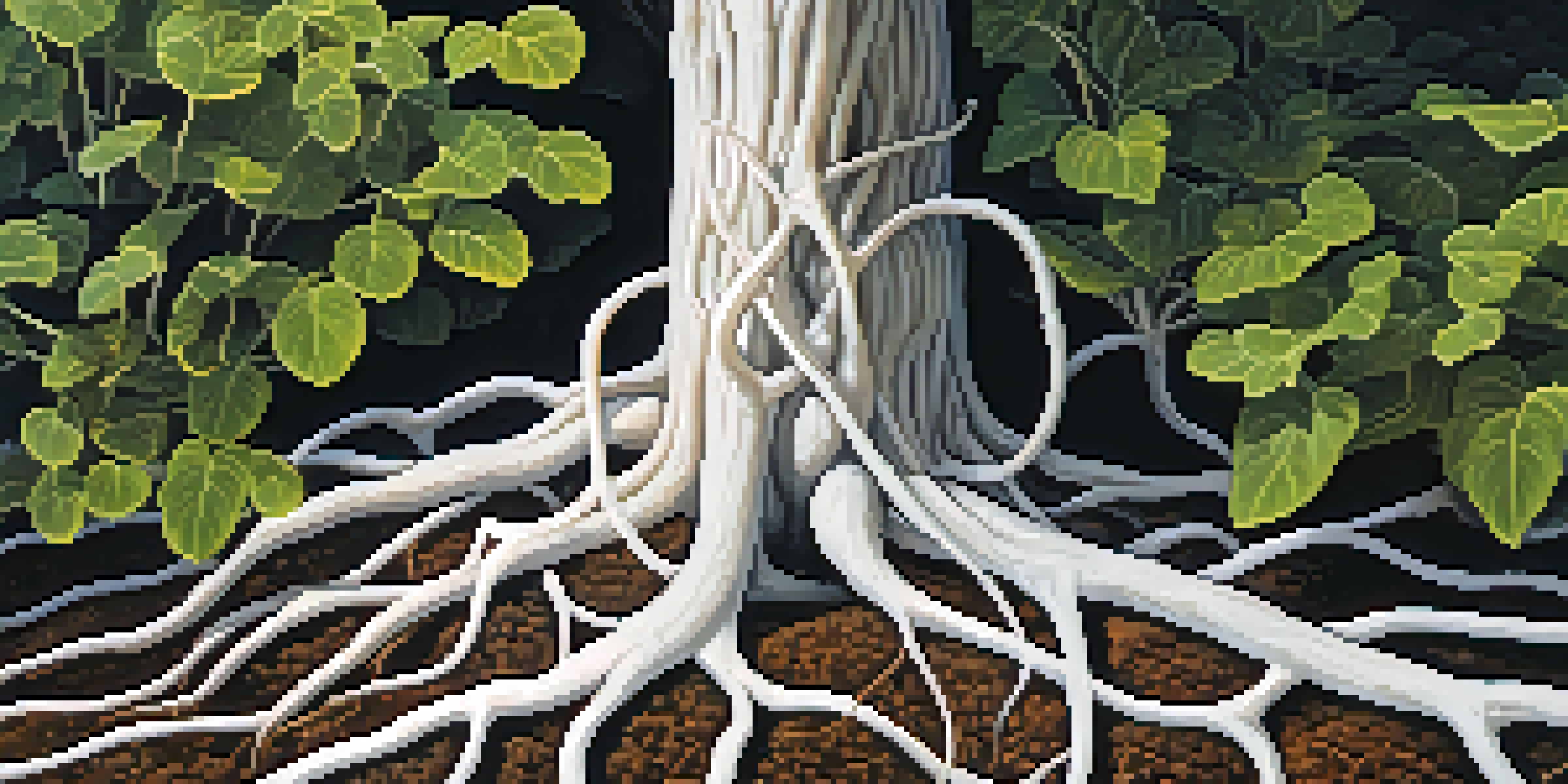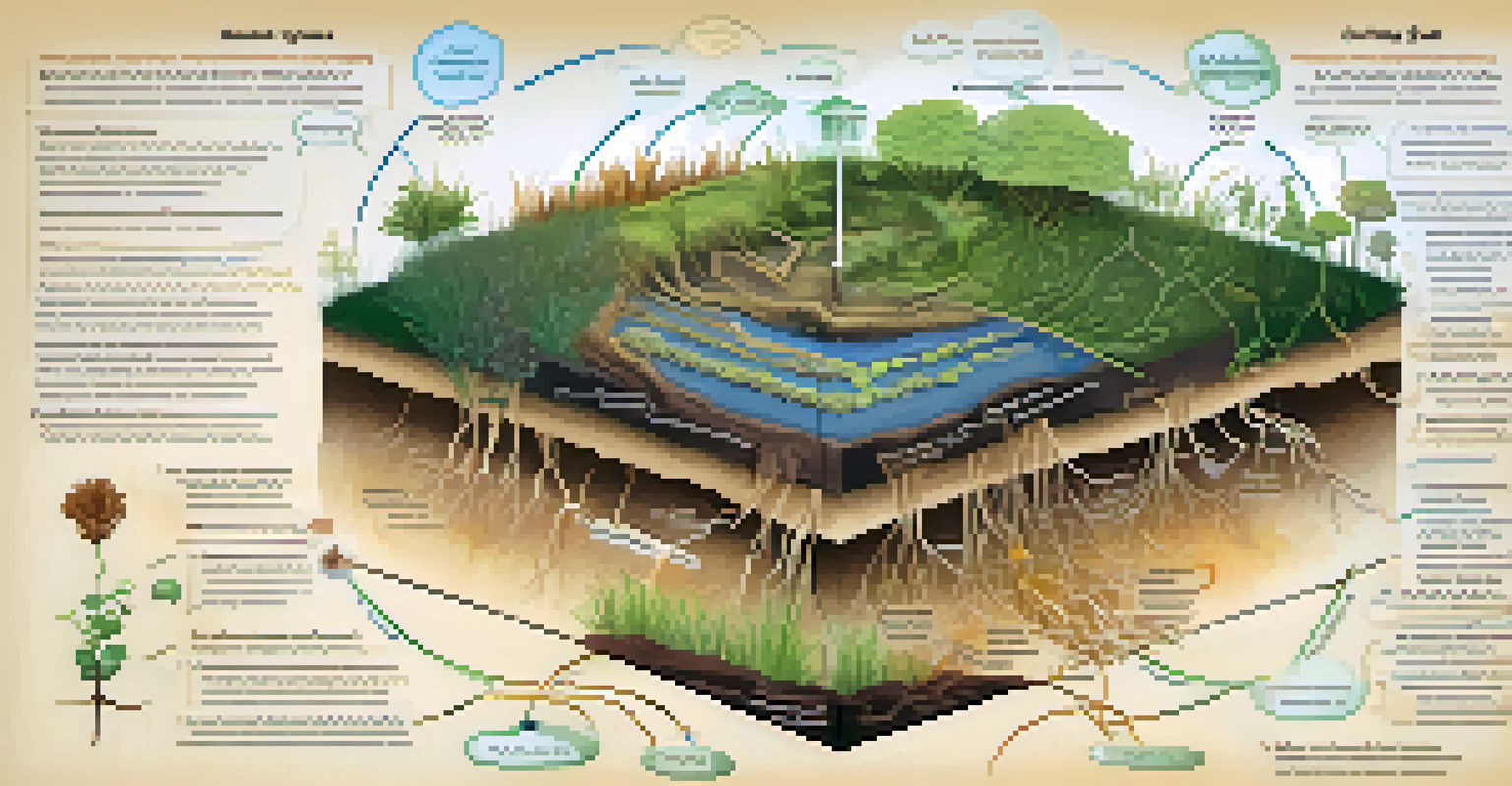Understanding Mycorrhizal Relationships in Ecosystems Today

What Are Mycorrhizal Relationships?
Mycorrhizal relationships are symbiotic partnerships between fungi and plant roots. In these interactions, fungi extend their hyphae, or thread-like structures, into the soil, which helps them absorb nutrients and water. In return, plants provide the fungi with carbohydrates produced through photosynthesis. This mutual exchange is essential for the health of many ecosystems.
The soil is the great connector of our lives, the source and destination of all. Food, fiber, shelter, and fuel are all dependent on healthy soil.
There are different types of mycorrhizal relationships, including arbuscular mycorrhizae and ectomycorrhizae. Arbuscular mycorrhizae penetrate plant root cells, while ectomycorrhizae form a sheath around the roots. Each type plays a unique role in enhancing nutrient uptake, particularly phosphorus, which is crucial for plant growth.
Understanding these relationships helps us appreciate the complexity of ecosystems. Just as a team works together to achieve a common goal, mycorrhizal fungi and plants collaborate to thrive, illustrating the interconnectedness of life.
The Role of Mycorrhizae in Nutrient Cycling
Mycorrhizal fungi are key players in nutrient cycling within ecosystems. They enhance the availability of essential nutrients like nitrogen and phosphorus, making them more accessible to plants. This process not only supports plant health but also boosts overall ecosystem productivity.

By breaking down organic matter in the soil, mycorrhizae contribute to the formation of humus, a vital component of fertile soil. The fungi's extensive network allows them to reach nutrients that plant roots alone might struggle to access. This relationship is particularly beneficial in nutrient-poor environments.
Mycorrhizae Enhance Plant Growth
Mycorrhizal relationships significantly improve plant health and resilience by facilitating nutrient exchange and providing defense against pathogens.
In essence, mycorrhizal relationships act like a nutrient delivery service, ensuring plants receive the resources they need to grow. This cycle of nutrient exchange underpins the health of entire ecosystems, highlighting the importance of preserving these relationships.
Mycorrhizae and Plant Health: A Vital Connection
The health of plants is closely linked to their mycorrhizal partnerships. Research shows that plants with mycorrhizal associations tend to exhibit better growth and resilience against stress. This is particularly evident in challenging conditions, such as drought or poor soil.
Nature does not hurry, yet everything is accomplished.
Mycorrhizal fungi also provide plants with enhanced defense mechanisms against pathogens. By forming a protective barrier around roots, these fungi help plants fend off harmful bacteria and fungi. This symbiotic relationship acts like a security detail for plants, helping them thrive in their environments.
Ultimately, the robust connection between mycorrhizae and plant health illustrates the importance of preserving these ecosystems. Healthy plants lead to vibrant ecosystems, which in turn support diverse wildlife and contribute to our planet's overall health.
The Impact of Human Activity on Mycorrhizal Networks
Human activities, such as agriculture and urban development, can significantly disrupt mycorrhizal networks. Practices like monoculture farming can reduce fungal diversity, leading to weaker plant-fungi relationships. This disruption not only affects plant health but can also diminish soil fertility over time.
Additionally, the use of chemical fertilizers can alter the natural balance of soil nutrients, making mycorrhizal partnerships less effective. When plants rely heavily on synthetic fertilizers, they may reduce their dependence on these beneficial fungi, weakening the symbiotic relationship.
Human Impact on Mycorrhizal Networks
Human activities, such as agriculture and urban development, disrupt mycorrhizal networks, leading to weakened plant-fungi relationships and reduced soil fertility.
As stewards of the environment, it's crucial to recognize our role in preserving mycorrhizal networks. Implementing sustainable practices, such as crop rotation and organic farming, can help protect these vital relationships, ensuring healthier ecosystems for future generations.
Restoration of Mycorrhizal Associations
Restoring mycorrhizal associations can play a significant role in ecosystem rehabilitation. In areas affected by deforestation or soil degradation, reintroducing mycorrhizal fungi can help revive soil health and promote plant growth. This restoration process often involves inoculating soils with specific fungal species that support local flora.
Researchers have found that successful reestablishment of mycorrhizal networks can lead to improved biodiversity. As plant communities recover, they provide habitats for various wildlife, enhancing overall ecosystem resilience. This process highlights the interconnectedness of all living things in an ecosystem.
Through restoration efforts, we can harness the power of mycorrhizal relationships to heal our environment. By actively engaging in these practices, we can help secure a more sustainable future for our ecosystems.
Mycorrhizae in Climate Change Mitigation
Mycorrhizal relationships also play a crucial role in mitigating climate change. These fungi enhance the soil's ability to store carbon, helping to sequester greenhouse gases. By improving soil structure and fertility, mycorrhizal associations contribute to healthier ecosystems that can better withstand climate fluctuations.
Healthy soils rich in mycorrhizal networks can retain moisture more effectively, making them more resilient during droughts. This resilience not only supports plant growth but also aids in maintaining animal habitats, demonstrating the far-reaching impact of these relationships on biodiversity.
Restoration Benefits Ecosystems
Restoring mycorrhizal associations can rejuvenate soil health and promote biodiversity, highlighting the interconnectedness of ecosystems.
By understanding and promoting mycorrhizal associations, we can take proactive steps towards climate change mitigation. The intricate web of life that includes these fungi is vital for maintaining ecological balance, and their preservation is essential for our planet's future.
Future Research and Mycorrhizal Studies
The study of mycorrhizal relationships is an exciting and evolving field of research. Scientists are continually discovering new species of mycorrhizal fungi and uncovering their specific roles in different ecosystems. This ongoing research is essential for understanding how these relationships can be harnessed for agricultural and ecological benefits.
Future studies may focus on how mycorrhizal networks adapt to changing environmental conditions, such as climate change or habitat loss. Understanding these adaptations can provide insights into enhancing plant resilience and improving soil health in the face of global challenges.

As we delve deeper into the world of mycorrhizal relationships, we uncover the hidden complexities of ecosystems. By prioritizing research in this area, we can better appreciate and protect the intricate connections that sustain life on our planet.